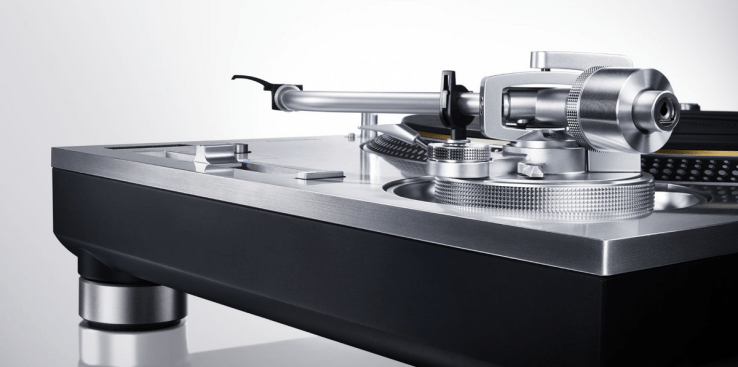
The Technics SL-1200 turntable might be the most important piece of DJ equipment ever created. Hip-hop and modern dance music wouldn’t exist if it weren’t for this iconic device.
Although its updated and improved predecessor, the SL-1200 MK2, might not be the best turntable ever created, it is by far the most popular turntable for re-sale on sites like eBay and Craigslist. DJs everywhere want it.
Back in 2010, Panasonic discontinued the Technics 1200 after sales numbers dropped and suppliers became limited. But last year, Panasonic announced that it would bring back its renowned turntable.
Earlier today, Panasonic gave us the details on when the new Technics are coming and what to expect.
Panasonic is releasing two different versions of the turntable: a limited edition 50th Anniversary Grand Class SL-1200GAE (limited to 1,200 units) and a non-limited Grand Class SL-1200G. The limited edition will be released this summer, while the non-limited version will be released in late 2016.
From a technical perspective, there isn’t a huge difference between the two devices other than the tonearm (magnesium for the limited edition and aluminum for the non-limited edition). Panasonic is pushing the new product line for high fidelity, not just DJ use.
Specs:
- Newly designed twin-rotor surface-facing direct drive motor
- Direct drive motor controller
- High sensitive tonearm
- Brass-top turntable platter
- Insulator
- Heavy aluminum top plate
- Turntable speeds of 33 1/3 rpm, 45 rpm, 78 rpm
- Variable range pitch of ±8%, ±16%
- W: 453 mm H: 170 mm D: 372 mm . / 18kg
- Phono output x1 / SIGNAL GND x1
The return of Technics is largely symbolic of the resurgence in physical music. TheJenson turntable was one of the top sellers on Amazon this holiday season, and vinyl sales have continued to grow over the past few years.
Digital streaming and MP3s might give us more access to endless catalogs of heady jams, but nothing compares to being able to touch, feel, and show off the music you love the most. The same could be said about throwback cameras and Polaroids. Kids born within the last 15 years have never had this experience, and now might be the time that many are longing for it.
But how much are they longing for it? Is this a smart move by Panasonic, and will audio fanatics actually buy this? Whether or not this is a success boils down to price, availability of products in the secondhand market, and perception as a luxury product.
After the Technics 1200’s were discontinued, Pioneer launched a well-reviewed but expensive copycat (retails for $699). This likely helped create positive buzz for the return of the original Technics.
Technics definitely has the brand loyalty to be able to charge more than $699 for the new decks, but with tons of cheaper secondhand versions of the older variants still available on eBay and Craigslist, why would anyone who is seriously considering buying turntables choose the the newer more expensive option? Functionally, both the new and the old versions do the exact same thing.
Panasonic is entering a buyer’s market that has arguably better and less recognizable products all over the place for less money, and I’m not sure if people will really be sold on it. There are incredible and cheaper tables out there that have stepped up while the 1200 was “asleep.”
Unless you perceive the new version as “luxury,” it doesn’t really seem to make a lot of sense to buy this. Will luxury brand perception prevail? Or will users make the call based on their bank accounts? We’ll have to wait and see.

Comments
Post a Comment